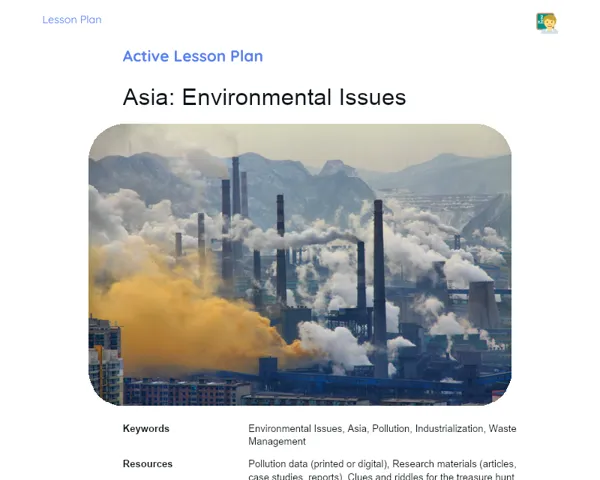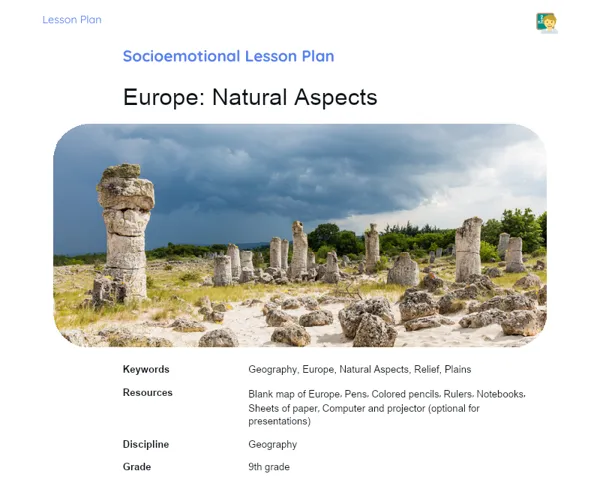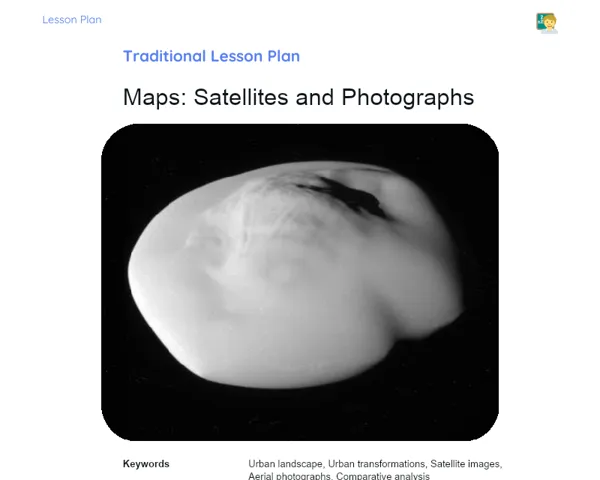Lesson Plan | Socioemotional Learning | Water Resources: Water Reuse
| Keywords | Water Reuse, Water Resources, Sustainability, Self-awareness, Self-control, Responsible Decision-making, Social Skills, Social Awareness, RULER Method, Geography, 6th Grade, Deep Breathing, Practical Project, Emotional Reflection, Personal and Academic Goals |
| Resources | Poster Boards, Markers, Internet Access, Notetaking Materials, Sheets of Paper, Pens, Computers or Tablets (optional for research) |
| Codes | - |
| Grade | 6th grade |
| Discipline | Geography |
Objective
Duration: (10 - 15 minutes)
The purpose of this stage of the Socioemotional Lesson Plan is to introduce students to the concept of water reuse, laying the groundwork for understanding the critical importance of conserving our water resources. This will equip students with a foundational awareness of the environmental and social issues surrounding water use, thereby prepping them for practical activities and thoughtful discussions in the lesson.
Objective Utama
1. Understand the significance of water reuse for sustainability and the conservation of our water resources.
2. Acknowledge that water is a limited resource and discuss the impacts of its mindful usage for all life forms on Earth.
Introduction
Duration: (15 - 20 minutes)
Emotional Warmup Activity
Deep Breathing for Enhanced Focus and Concentration
The emotional warm-up activity will be a session of Deep Breathing. This exercise encourages students to anchor themselves in the present, fostering a sense of calm and focus. Deep breathing is a straightforward yet powerful method to alleviate anxiety and enhance concentration, getting students ready for an effective lesson.
1. Request that students find a comfortable position in their chairs, ensuring their feet are flat on the floor and their hands are resting on their laps.
2. Instruct them to gently close their eyes and focus on their breathing.
3. Guide them to inhale deeply through their nose, counting to four.
4. Ask them to hold their breath for a count of two.
5. Then, instruct them to slowly exhale through their mouth, counting to six.
6. Repeat the deep breathing cycle for five minutes, encouraging students to concentrate on their breathing rhythm and release any built-up tension.
7. Once the activity concludes, ask students to gradually open their eyes and refocus on the classroom, feeling more relaxed and attentive.
Content Contextualization
Water is a vital resource for all life on our planet. However, we frequently overlook the fact that the accessible amount of water for consumption is limited. In several parts of the world, water scarcity presents a daily challenge for millions. Imagine having to traverse long distances daily just to fetch drinking water. This is the everyday reality for many communities worldwide. Reflecting on this circumstance can help us appreciate water resources more and recognize the importance of sustainable practices such as water reuse.
Additionally, wasting water has direct repercussions on both the environment and society. For instance, excessive water consumption in one region can decrease its availability in others, negatively affecting local agriculture, wildlife, and vegetation. Therefore, learning to reuse water effectively not only aids in the conservation of natural resources but also promotes social and environmental equity.
Development
Duration: (60 - 75 minutes)
Theory Guide
Duration: (20 - 25 minutes)
1. ### Key Components of the Lesson Topic
2. Water Resources: Water resources encompass all types of water sources available on Earth, such as rivers, lakes, aquifers, oceans, and rainwater. However, freshwater constitutes only a small fraction of the overall water and is paramount for human consumption.
3. Water Cycle: The water cycle illustrates the movement of water on Earth. It involves processes like evaporation, condensation, precipitation, and infiltration. This cycle is crucial for the distribution of water resources.
4. Water Reuse: Reusing water involves utilizing techniques to recycle water that has already been used in household, industrial, or agricultural activities. Examples include rainwater harvesting, recycling greywater (from sinks and showers), and efficient irrigation methods.
5. Importance of Reuse: Water reuse is essential for sustainability. In regions where water is scarce, these practices can guarantee water availability for critical uses. Furthermore, reuse reduces the strain on water treatment systems and conserves natural resources.
6. Water as a Finite Resource: The freshwater available for human consumption is limited. With the global population expanding and climate change exacerbating the situation, the pressure on water resources intensifies, making conscientious use and reuse even more crucial.
7. Examples and Applications: Practical examples of water reuse might include employing rainwater harvesting systems for garden irrigation, installing water recycling systems in factories, and reusing greywater in households for toilet flushing.
Activity with Socioemotional Feedback
Duration: (30 - 35 minutes)
Water Reuse Project 🌊
Students will undertake a practical project focused on water reuse in their homes or schools. This endeavor will enable them to apply the insights gained during the theoretical lesson while also enhancing their socioemotional skills through group collaboration and reflection on their actions' environmental and societal impact.
1. Divide students into groups of 4 to 5.
2. Each group must select a specific aspect of water reuse to concentrate on, such as rainwater harvesting, greywater reuse, or efficient irrigation.
3. Provide materials including poster boards, markers, and internet access for research.
4. Students should devise a detailed plan outlining the implementation steps, required materials, and expected advantages of their project.
5. Encourage the groups to brainstorm on how to engage the community and educate others about the significance of water reuse.
6. After their plans are ready, have each group present their project to the class, emphasizing the importance of water reuse and how their initiatives will promote sustainability.
Discussion and Group Feedback
Following the presentations, facilitate a group discussion using the RULER method. Recognize the emotions students experienced throughout the project development and presentation, such as anxiety, excitement, or pride. Understand the origins of these emotions by discussing how teamwork and the sustainability theme shaped their feelings. Name the emotions accurately, aiding students in expressing their experiences openly and thoughtfully. Express emotions appropriately, cultivating a respectful and supportive environment. Lastly, help students regulate their emotions by providing strategies for managing feelings of frustration or stress and emphasizing the importance of self-control and resilience.
Conclusion
Duration: (20 - 25 minutes)
Reflection and Emotional Regulation
Encourage students to write a paragraph reflecting on the challenges they encountered during the lesson and how they managed their emotions. Alternatively, hold a group discussion where each student can share their experiences. Ask students: 'What were the most significant challenges you faced while working on the water reuse project?' and 'How did you navigate the emotions that came up during the activity?'. Motivate them to think about the strategies they employed to maintain self-control and explore ways to improve in the future.
Objective: This activity aims to promote self-assessment and emotional regulation among students. By reflecting on the obstacles faced and the emotions felt, students can identify helpful strategies for tackling challenging situations. This experience fosters self-awareness and self-control, which are vital for personal and academic growth.
Glimpse into the Future
Clarify to students the significance of establishing personal and academic goals in relation to the lesson content. Instruct each student to draft a personal goal and an academic goal they aspire to achieve. For instance, a personal goal could involve implementing a water reuse practice at home, while an academic goal may involve deepening their understanding of water resources. Encourage students to share their goals with the class, nurturing a culture of mutual support.
Penetapan Objective:
1. Incorporate a water reuse practice at home.
2. Enhance knowledge regarding water resources.
3. Raise awareness among family members about the significance of water reuse.
4. Contribute to school initiatives related to sustainability.
5. Explore articles or documentaries focused on the conservation of water resources. Objective: The aim of this section is to bolster students' independence and the practical application of their learning. Setting personal and academic goals encourages students to keep developing their skills and knowledge beyond the classroom, facilitating continuous and meaningful learning.



